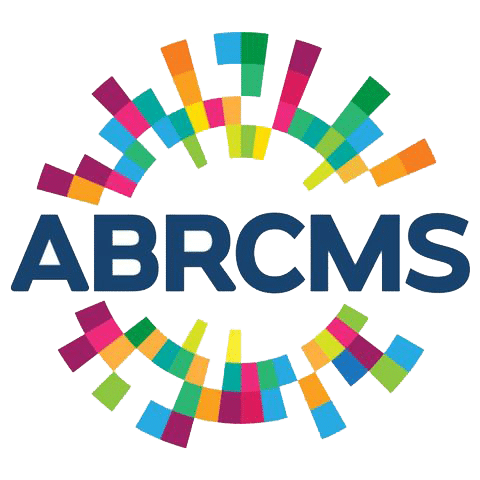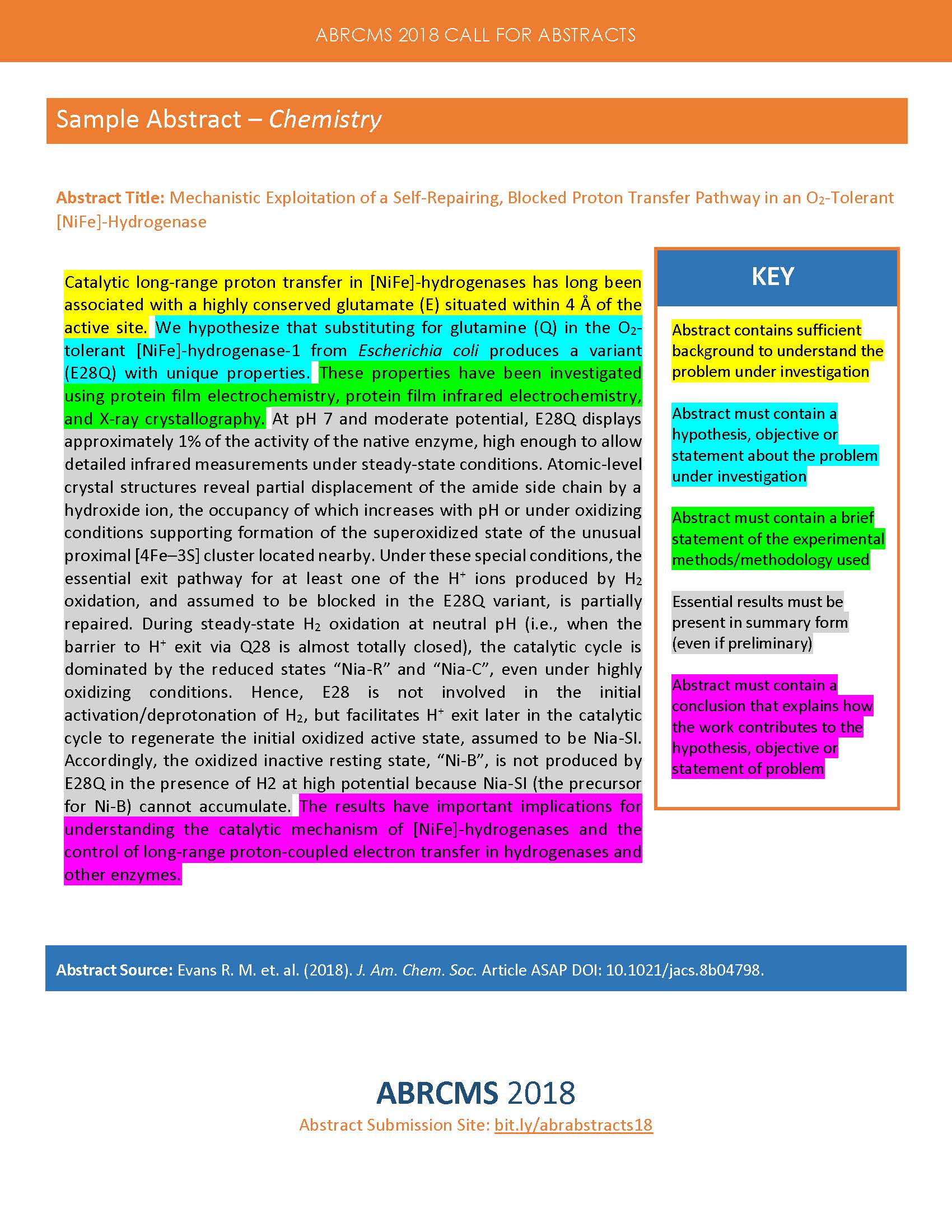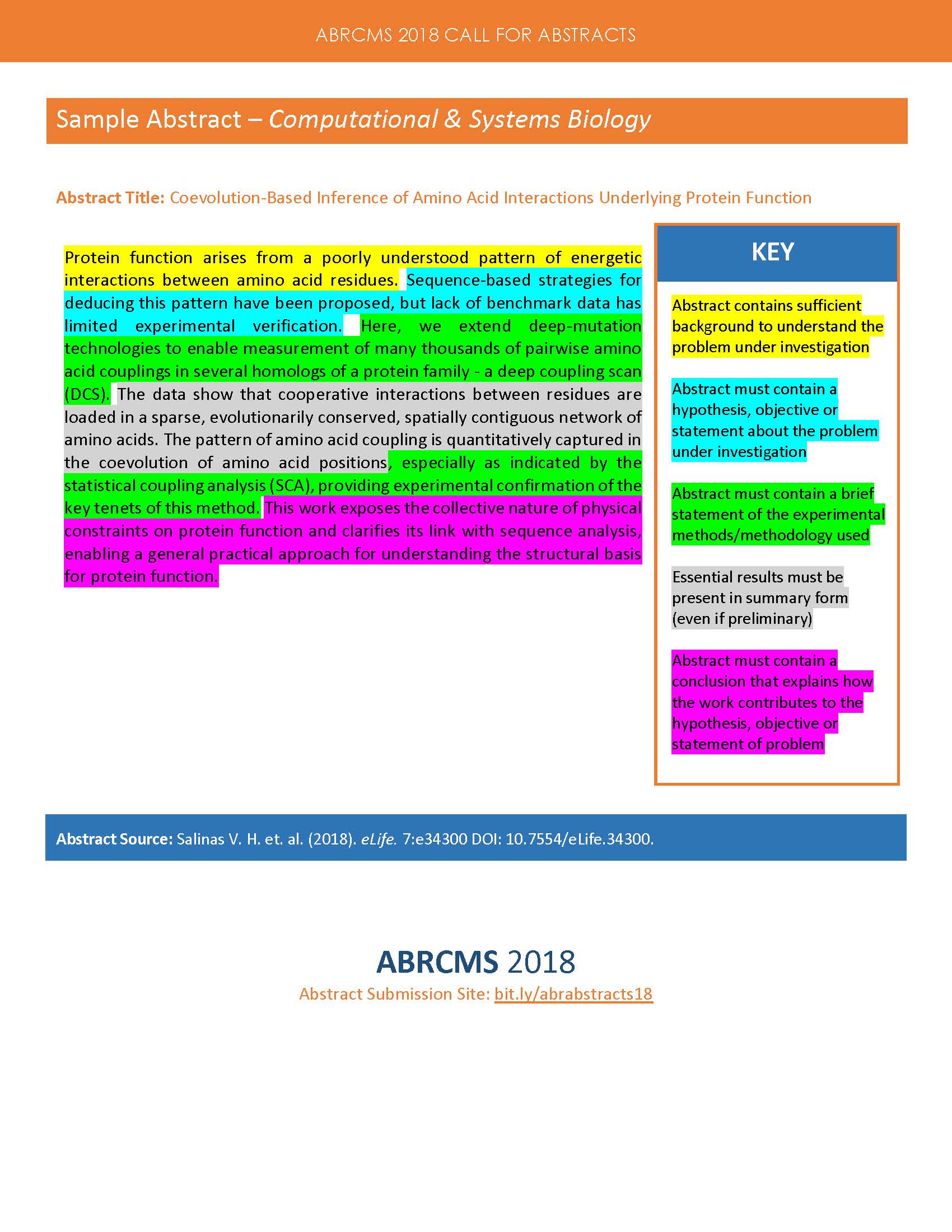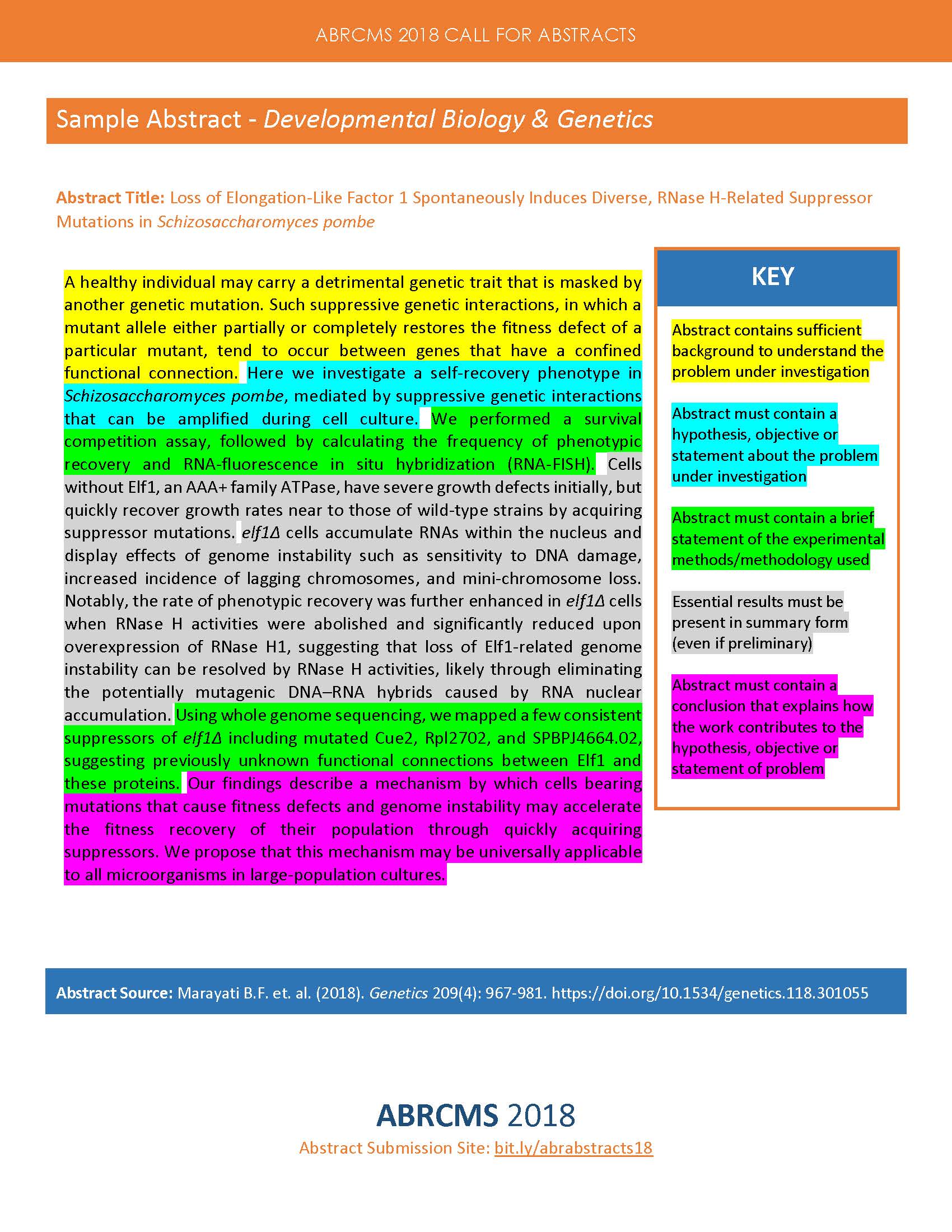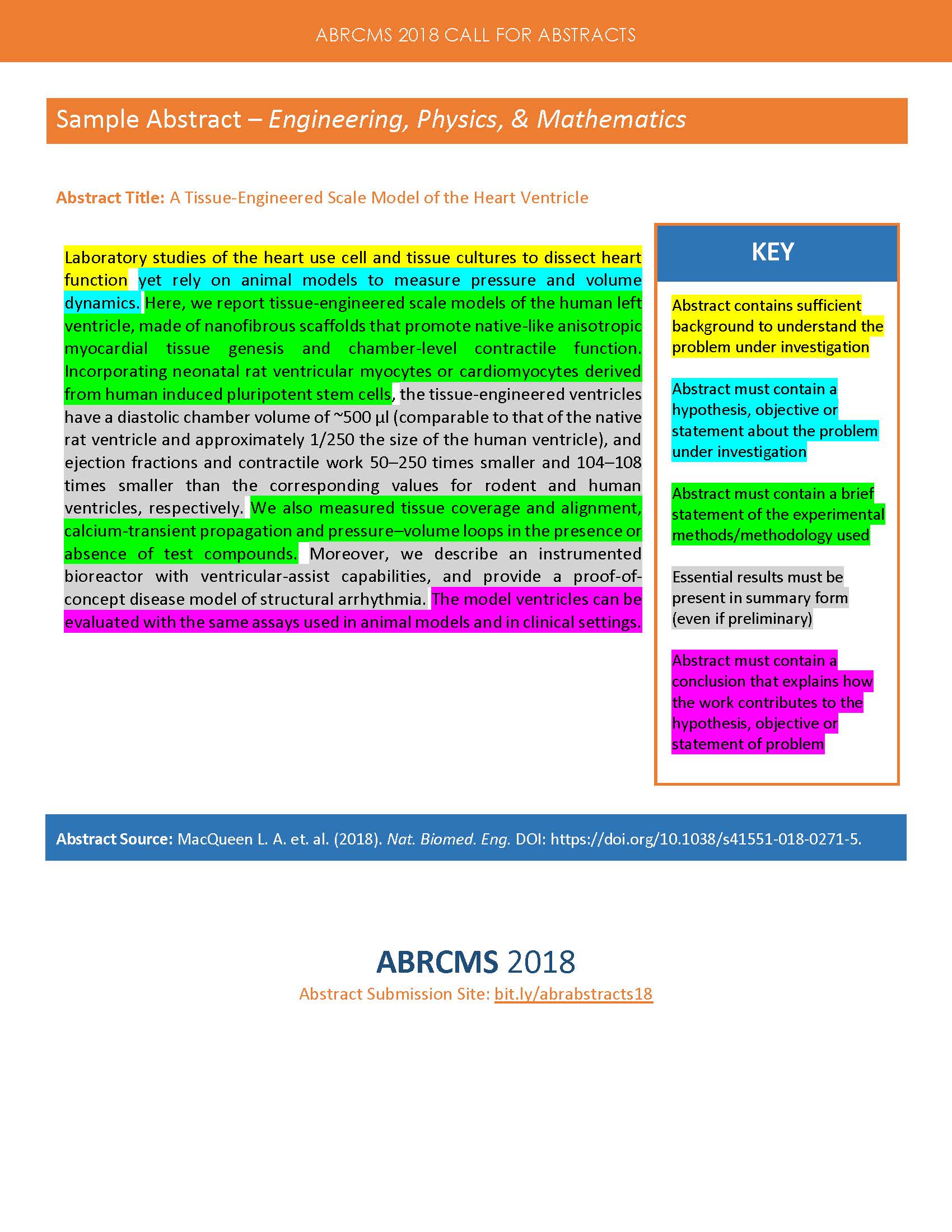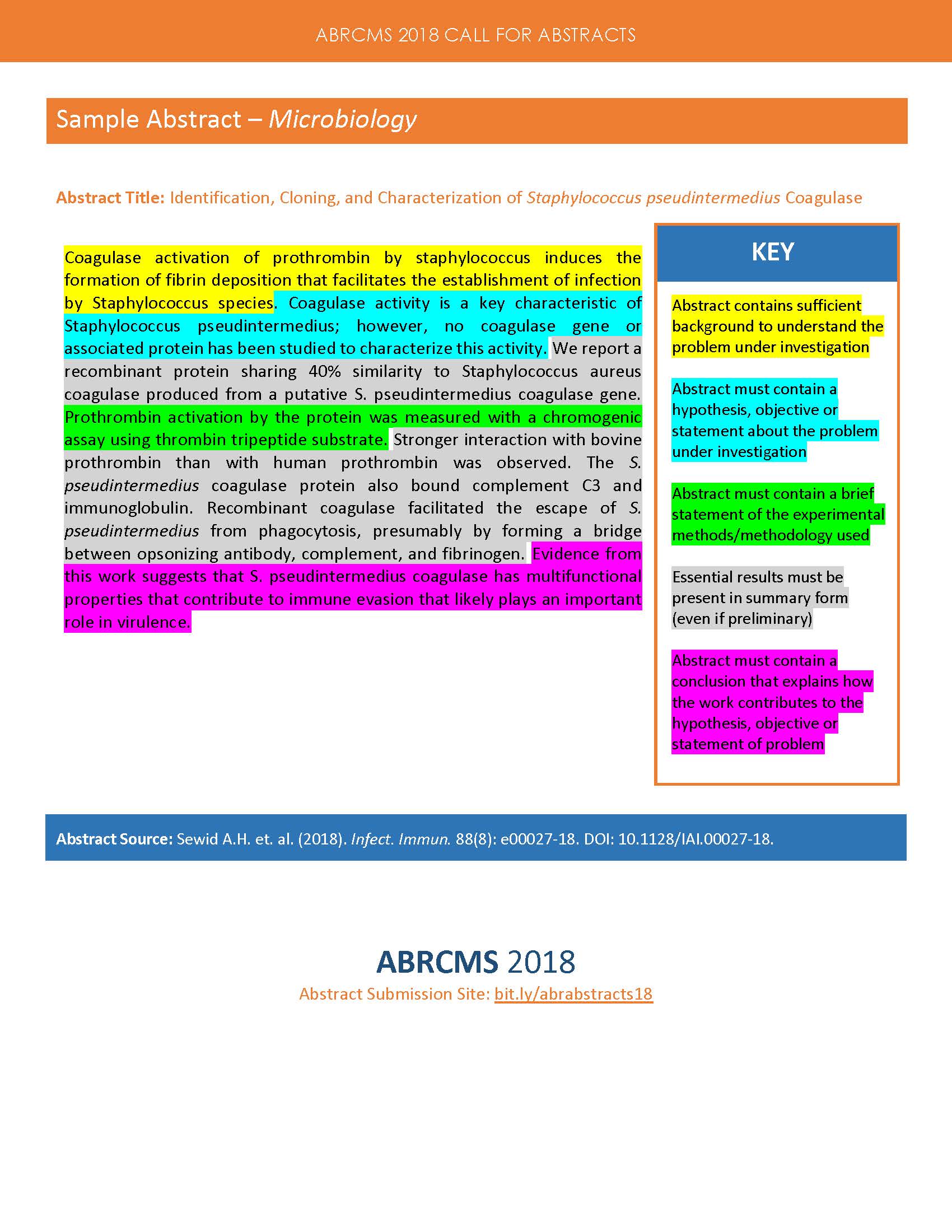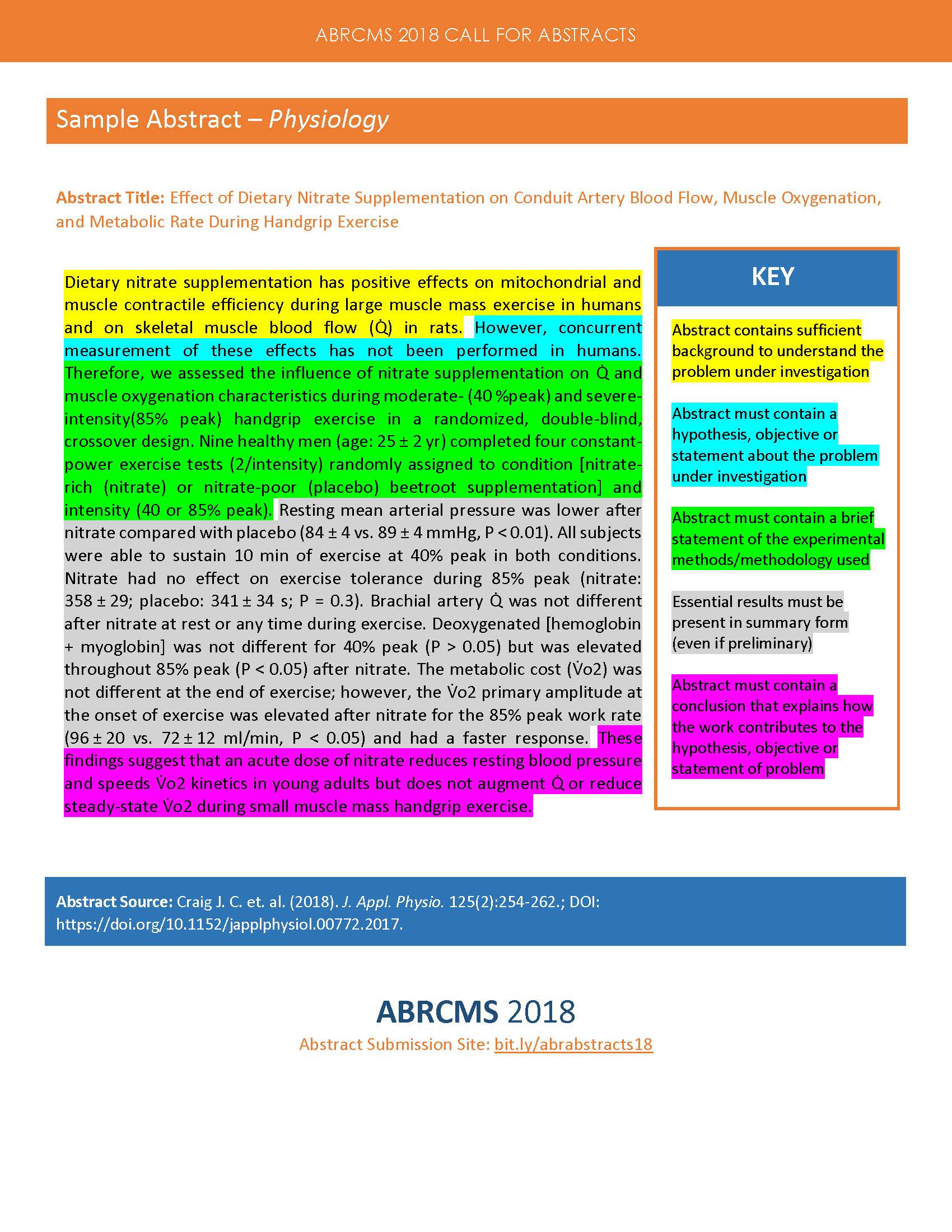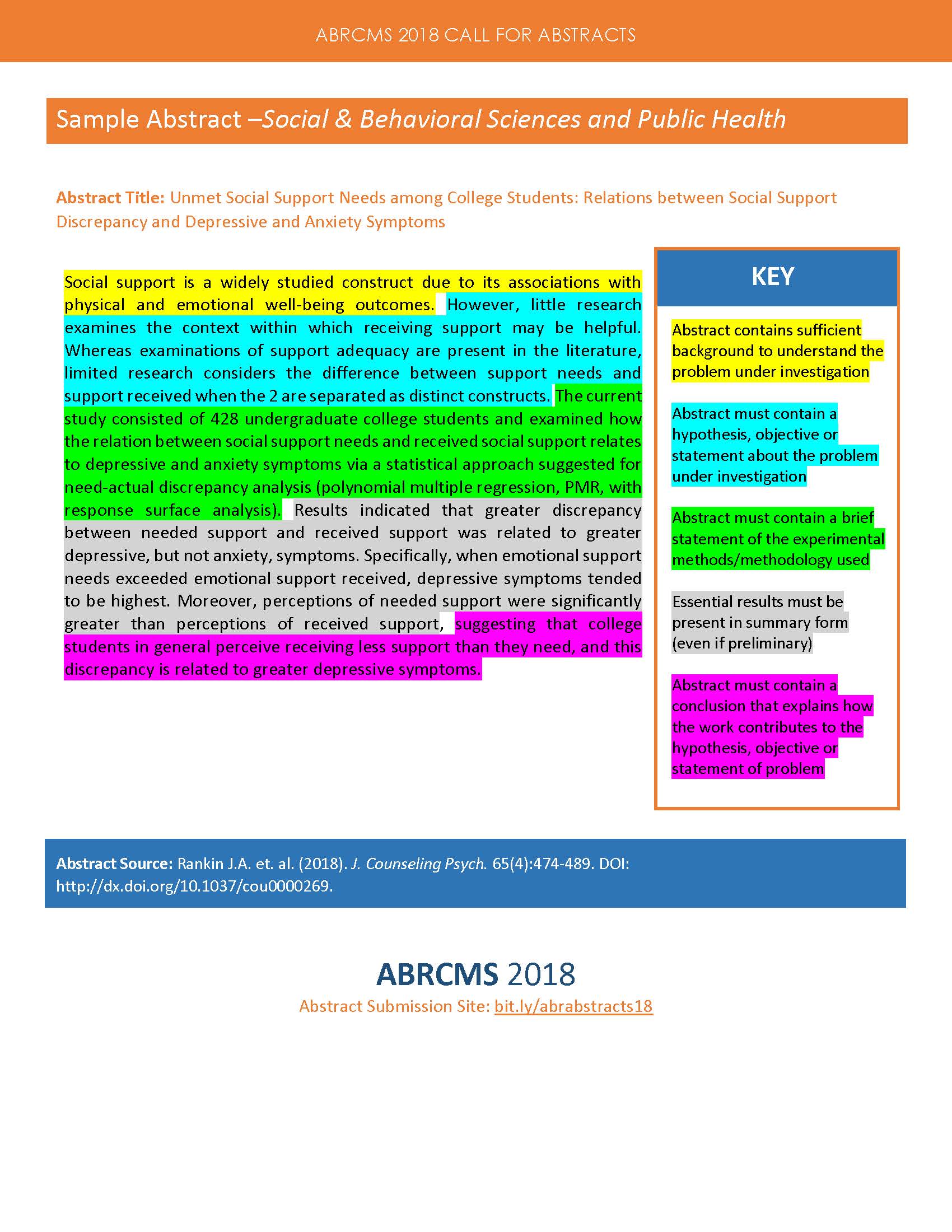Components of a Competitive Abstract
Submitting an Abstract
Use the following as a guide for writing a competitive abstract:
Top 5 Tips for Writing Your ABRCMS Abstract
This list of tips has been compiled from our webinar series, "Writing a Compelling Abstract."
1. READ the instructions! Don’t waste energy doing the wrong thing. Familiarize yourself with the requirements for the ABRCMS Abstract submission process.
2. Understand who is the TARGET AUDIENCE (or who you want to be your audience). This not a specialized journal that knows all of your jargon, so know that going in.
3. Write your hypothesis/statement of purpose with CLARITY. An abstract allows the reader to learn a great deal about your work with very little effort. Even though every project won't have a hypothesis, you should always clearly indicate the intended purpose of your work.
4. Make sure the results and conclusions TIE BACK to what you said in your hypothesis/statement of purpose. Think back to what you said the hypothesis/statement of purpose was. If your results and conclusions don't clearly support that, then you haven't done a good job showing reviewers that you are worthy to be selected.
5. Give the abstract to multiple people (including your PI) to REVIEW it. We can't stress the importance of proofreading and review. The more eyes it sees, the better it will be!
Resources on Writing Competitive Abstracts
Click on each discipline to see a sample annotated abstract:
Webinar
Articles
- “How to Write an Abstract for the Undergraduate Research, Scholarship and Creative Activities Conference”
- “How to Write an Abstract for a Conference”
- “Writing a Research Abstract”
- “Meeting Abstract Advice”
Books
- “Abstract Expressions: A Quick Guide to Writing Effective Abstracts for Papers and Conferences” by Allen Gaw, M.D., Ph.D.
- “Creating Effective Abstracts and Posters in Biomedicine: 500 Tips for Success” by Jane Fraser, PhD
